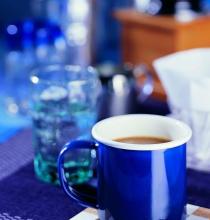Guatemala Antigua coffee region estate introduction Latissa estate
Cup reviews of Antigua coffee:
Aroma 7.8; flavor 7.85; acidity 7.95; balance 7.63; overall 7.78; alcohol 7.85; aftertaste 7.60
Delicate, well-balanced, with rich aromas and excellent sweetness.
(Elegant, well balanced with a rich aroma and a very sweet taste.) the three majestic volcanoes Agua, Acatenango and Fuego surround the Antigua Valley. Every once in a while, Fuego-- one of Guatemala's three active volcanoes adds fresh, mineral-rich ash to the soil of Antigua. The volcanic pumice in the soil can keep the soil moist, greatly making up for the lack of precipitation in Antigua, which is the least rainy of the eight coffee-producing regions in Guatemala.
Like all Guatemalan boutique coffee, Antigua coffee is grown in shade. In Antigua, shade is mainly used to protect coffee trees from frost, which is cold and sometimes frosty from December to February every year. Dense shade and extremely shallow aquifers create a unique microclimate for coffee trees living in Antigua. The extremely high content of pumice (pumice) in Antigua soil (from the active Fuaigo volcano Fuego) keeps the humidity stable at 65% all the year round, which is very different from other volcanic coffee producing areas, where the humidity is usually very different from the dry and wet seasons.
Fertile volcanic soil, low humidity, plenty of sunshine and cool nights all make up the unique Antigua region of Antigua is a closed valley surrounded by three volcanoes: Agua, Acatenango and Fuego. Antigua is flat and slightly sloping, unlike other coffee producers located in volcanic areas.
Most coffee trees are planted in the hinterland of the valley, even though they are already 5000 feet above sea level; in addition, some farmers grow coffee on the slopes of volcanoes, nearly 5600 feet above sea level, in the Antigua Valley, the oldest and best-known coffee producing area in Guatemala. Volcanoes and extremely shallow groundwater tables form a dry microclimate, which is characterized by low humidity, adequate sunshine and cool nights.

Important Notice :
前街咖啡 FrontStreet Coffee has moved to new addredd:
FrontStreet Coffee Address: 315,Donghua East Road,GuangZhou
Tel:020 38364473
- Prev

Introduction of Santa Cruz Manor in Ecuadorian Coffee Flavor production area
David Mino, the new champion barista from Ecuador, carefully cooked the original Ecuadorian coffee and led his friends to enjoy a trip to the tip of the Ecuadorian tongue. From the surprisingly soft Galpagos coffee, to the sour and bitter alpine coffee from LOJA, Ecuador, to the softer Ghanaian pugs coffee and mouth.
- Next

Guatemala Inchter Estate Coffee Estate Flavor Taste Introduction
The origin of the variety and name He is an elephant bean Maragogype and Pacas derived varieties take Maragogype and Pacas the first four letters of the combination into Pacamara is an excellent coffee variety developed in El Salvador, coffee particles are very large and close to the elephant beans about 21~22 mesh, is the best coffee varieties in Central and South America in the past two years, every country or farm wants to find out
Related
- Does Rose Summer choose Blue, Green or Red? Detailed explanation of Rose Summer Coffee plots and Classification in Panamanian Jade Manor
- What is the difference between the origin, producing area, processing plant, cooperative and manor of coffee beans?
- How fine does the espresso powder fit? how to grind the espresso?
- Sca coffee roasting degree color card coffee roasting degree 8 roasting color values what do you mean?
- The practice of lattes: how to make lattes at home
- Introduction to Indonesian Fine Coffee beans-- Java Coffee producing area of Indonesian Arabica Coffee
- How much will the flavor of light and medium roasted rose summer be expressed? What baking level is rose summer suitable for?
- Introduction to the characteristics of washing, sun-drying or wet-planing coffee commonly used in Mantenin, Indonesia
- Price characteristics of Arabica Coffee Bean Starbucks introduction to Manning Coffee Bean Taste producing area Variety Manor
- What is the authentic Yega flavor? What are the flavor characteristics of the really excellent Yejasuffi coffee beans?

